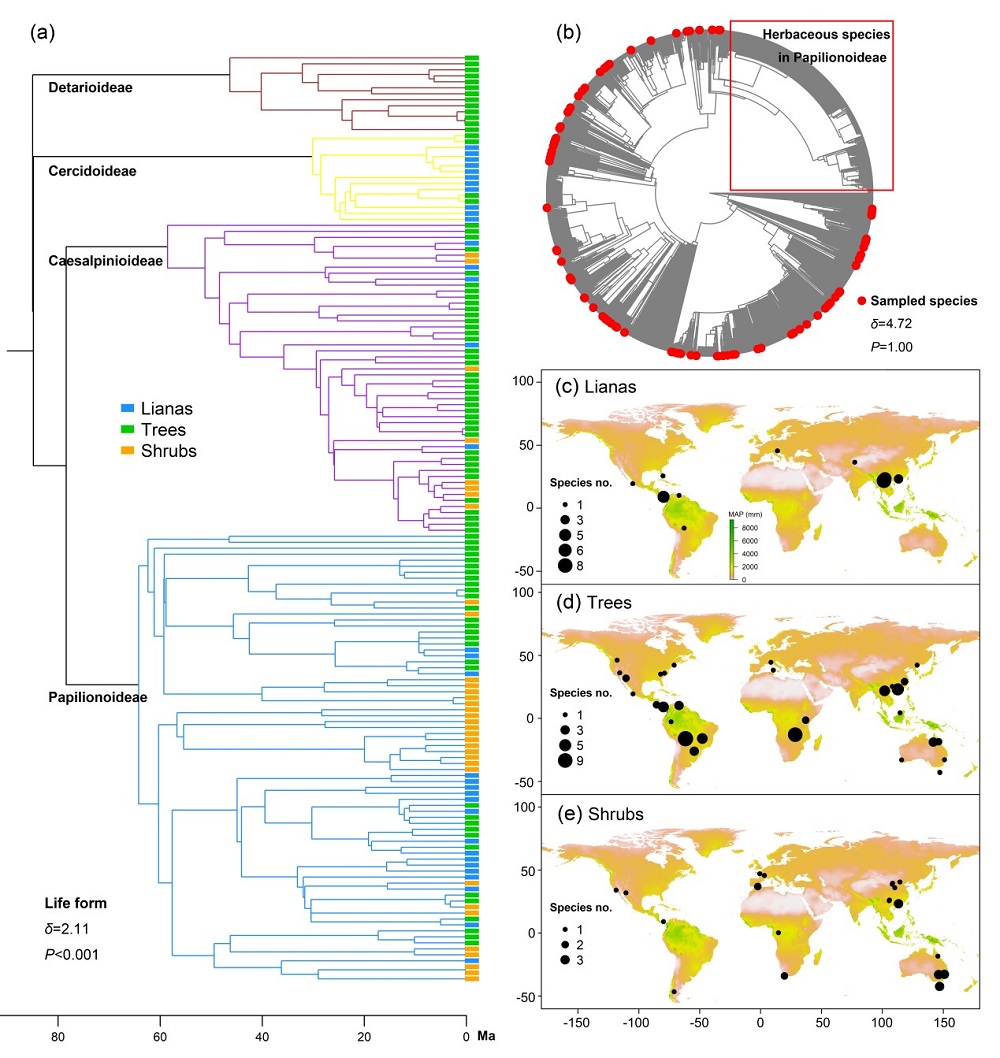Disentangling climate and evolution in explaining variation in hydraulic traits of Fabaceae species
The contrasting hydraulic traits observed among different plant life forms are shaped by entangled environmental and evolutionary processes. However, we lack understanding of the relative importance of life form, climate and phylogeny in explaining the variance of hydraulic traits. As the third largest family of angiosperms, Fabaceae has ~770 genera and over 19,500 species. Many species in Fabaceae are cosmopolitan, showing particular diversity and abundance in seasonal dry tropical forests and temperate shrub lands. Life forms in Fabaceae range from herbs and lianas, to shrubs and trees, which are each adapted to diverse environments. All these make the family a longtime focus of ecological studies, and investigating the diverse hydraulic traits of species in Fabaceae is crucial not only in explaining their distribution, but also in predicting their responses to future climate change.
Researchers from South China Botanical Garden, Chinese Academy of Sciences, compiled data on seven hydraulic traits and eleven climatic variables of 150 Fabaceae species representing three woody life forms (lianas, trees and shrubs) from 62 sites worldwide (Figure 1). Using phylogenetic comparative analyses and variance partitioning, they found that the phylogenetic signal detected in most traits disappeared after considering life form, indicating that phylogenetic conservatism in traits originated from the divergence among life forms. The trait-climate relationships were also phylogenetically dependent, implying that trait responses are driven by climate and phylogeny together. Variance partitioning showed that phylogeny and climate explained greater trait variation than life form did. Therefore, the climate-driven hydraulic trait responses in Fabaceae still existed with phylogeny being considered, suggesting that this large family may be particularly sensitive to climate change.
This study expanded the knowledge of multiple factors in affecting variation of hydraulic traits of Fabaceae, emphasized the need to include phylogeny in plant hydraulic adaptation studies under future climate change. This work has been published in Journal of Ecology: https://doi.org/10.1111/1365-2745.14266.

File Download: